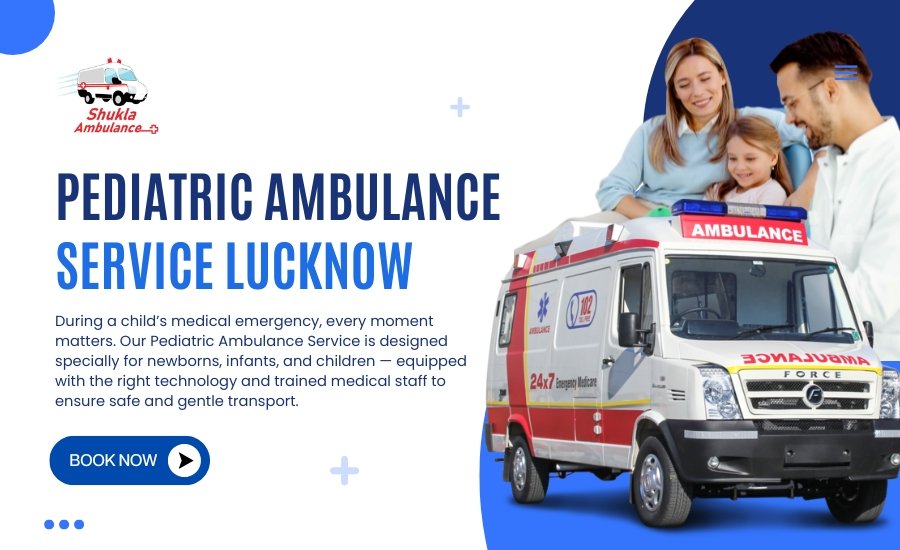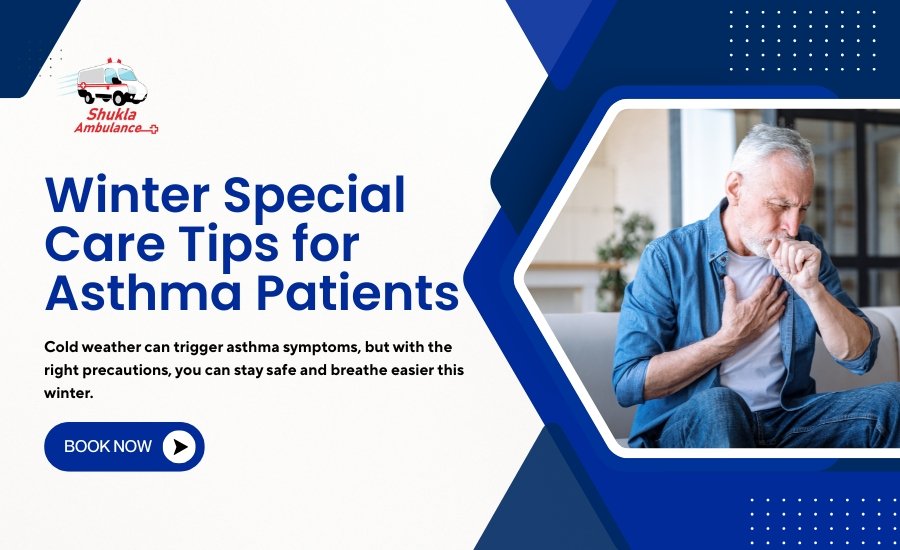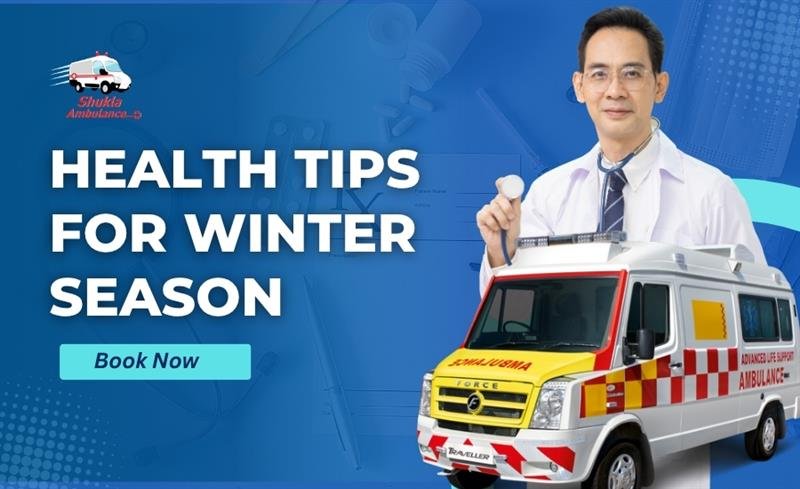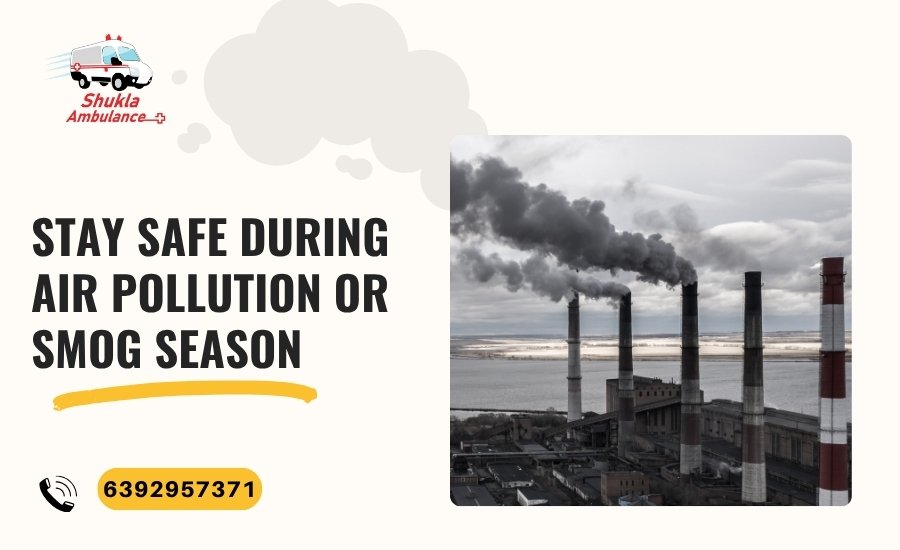

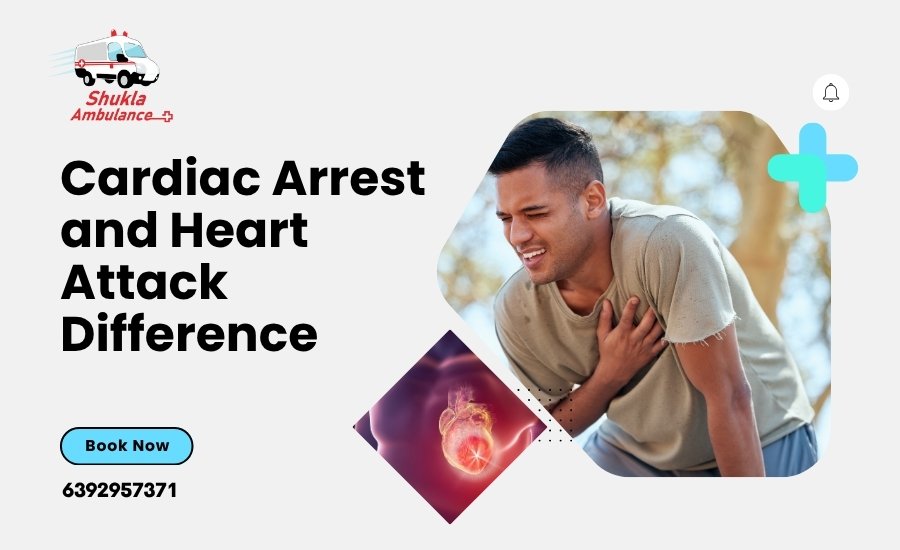
The heart-related emergency is one of the more serious medical conditions that can befall a person if one were to go by the dictionary. Two terms often mistakenly interchanged are cardiac arrest and heart attack. Even though both have something to do with the heart, they differ from each other in causing of causes, symptoms, and methods of treatment. Knowing the difference can save a life. Early warning signs should be able to be recognized, and immediate action taken; ambulance services such as Shukla Ambulance play a big role in getting a patient medical care in time.
In this article, we’ll explain the differences, warning signs, action plans, lifestyle tips, and recovery strategies for both cardiac arrest and heart attack.
Sudden cardiac arrest (SCA) occurs when the heart suddenly stops beating due to an electrical malfunction, causing the heart to quiver instead of pumping blood. Without immediate medical intervention, the person can lose consciousness within seconds and may die within minutes.
Common causes include:
• Arrhythmia (irregular heartbeat)
• Heart attack or coronary artery disease
• Cardiomyopathy (heart muscle disease)
• Severe electrolyte imbalance
Unlike a heart attack, cardiac arrest is not always caused by a blocked artery. It’s primarily an electrical problem, not a circulation problem.
Recognizing cardiac arrest early is challenging because it can occur without prior symptoms. However, some warning signs may appear:
• Sudden collapse or fainting
• Dizziness or lightheadedness
• Shortness of breath
• Chest discomfort or palpitations
• Weak pulse or no pulse
Immediate recognition and response are crucial. Every second counts.
Action Plan for Cardiac Arrest
If someone experiences cardiac arrest, follow this life-saving plan:
Tip: Keep emergency numbers handy and know basic CPR techniques.
Lifestyle Changes to Reduce Risk
Preventing cardiac arrest involves maintaining a healthy heart:
• Avoid smoking and limit alcohol intake
• Exercise regularly, at least 30 minutes a day
• Eat a heart-friendly diet rich in fruits, vegetables, and whole grains
• Manage stress through meditation, yoga, or hobbies
• Regular health check-ups to monitor blood pressure and cholesterol
Activity After Surviving a Sudden Cardiac Arrest
• Post-recovery, lifestyle adjustments are essential:
• Gradually resume physical activity under a doctor's supervision
• Follow medication and treatment plans
• Attend cardiac rehabilitation programs
• Monitor heart health regularly with ECGs and check-ups
SCA has its onset when the heart suddenly stops beating due to an electrical malfunction; the heart only twitches instead of actively pumping blood from the body. A person loses consciousness within seconds if there has not been any treatment, and within minutes, they can die.
A heart attack or myocardial infarction happens when blood flow is stopped to the heart muscle, mostly due to a blood clot in the coronary artery. The absence of blood causes the heart muscle to start dying, eventually leading to grave issues or death.
The causes are:
• Atherosclerosis (plaque-building-up in arteries)
• High cholesterol or high blood pressure
• Obesity, diabetes, or a sedentary lifestyle
• Smoking and alcohol consumption
A heart attack is mainly an issue related to circulation and may sometimes cause cardiac arrest should it get too severe.
Heart attack symptoms can develop gradually or suddenly:
• Chest pain or pressure, often spreading to the arm, neck, jaw, or back
• Shortness of breath
• Nausea, vomiting, or indigestion
• Cold sweat and anxiety
• Fatigue or dizziness
Note: Some people, especially women and diabetics, may experience silent heart attacks with minimal symptoms.
Important: Never drive yourself to the hospital; professional ambulance care ensures faster and safer treatment.
Lifestyle Changes After a Heart Attack
Recovering after a heart attack is a long-term commitment:
• Follow a heart-healthy diet that is low in saturated fats and sodium
• Exercise with guidance from the physician
• Take all of the medications as prescribed
• Manage stress with mindfulness, relaxation, and support groups
• Stay away from smoking and limit alcohol use
Activity After Heart Attack
• Going back to normal activities must be done gradually and under supervision:
• Light walking and stretching may be started at this point
• Cardiac rehabilitation programs are to be attended
• Do not perform strenuous activities until given a go-ahead by your cardiologist
• Keep your regular doctor's appointment for a check-up to monitor progress
|
Feature |
Cardiac Arrest |
Heart Attack |
|
Cause |
Electrical problem in the heart |
Blocked blood flow to the heart muscle |
|
Onset |
Suddenly, often without warning |
May develop gradually |
|
Symptoms |
Collapse, no pulse, loss of consciousness |
Chest pain, shortness of breath, nausea |
|
Immediate Risk |
Death within minutes if untreated |
Heart muscle damage may lead to cardiac arrest |
|
Treatment |
CPR, AED, emergency care |
Hospital treatment, medications, and possible surgery |
• Maintain a balanced diet rich in fruits, vegetables, and whole grains
• Exercise for at least 30 minutes daily
• Avoid tobacco and limit alcohol consumption
• Manage stress effectively
• Monitor blood pressure, cholesterol, and sugar levels
• Keep emergency numbers handy
Shukla Ambulance is committed to saving lives during heart emergencies:
• Quick response ensures timely medical intervention
• Trained paramedics provide CPR, oxygen therapy, and first aid on the spot
• Equipped with life-saving tools like defibrillators
• Helps patients reach hospitals safely and faster
Tip: Familiarize yourself with ambulance services in your area and share emergency contacts with family.
Understanding the difference between cardiac arrest and heart attack can save lives. Cardiac arrest is an electrical problem requiring immediate CPR and AED use, while a heart attack is a blockage issue requiring rapid medical intervention and ongoing care.
Adopting a heart-healthy lifestyle, recognizing warning signs, and knowing when to call Shukla Ambulance can make all the difference. Early recognition, prevention, and prompt medical care are the keys to survival and long-term heart health.
